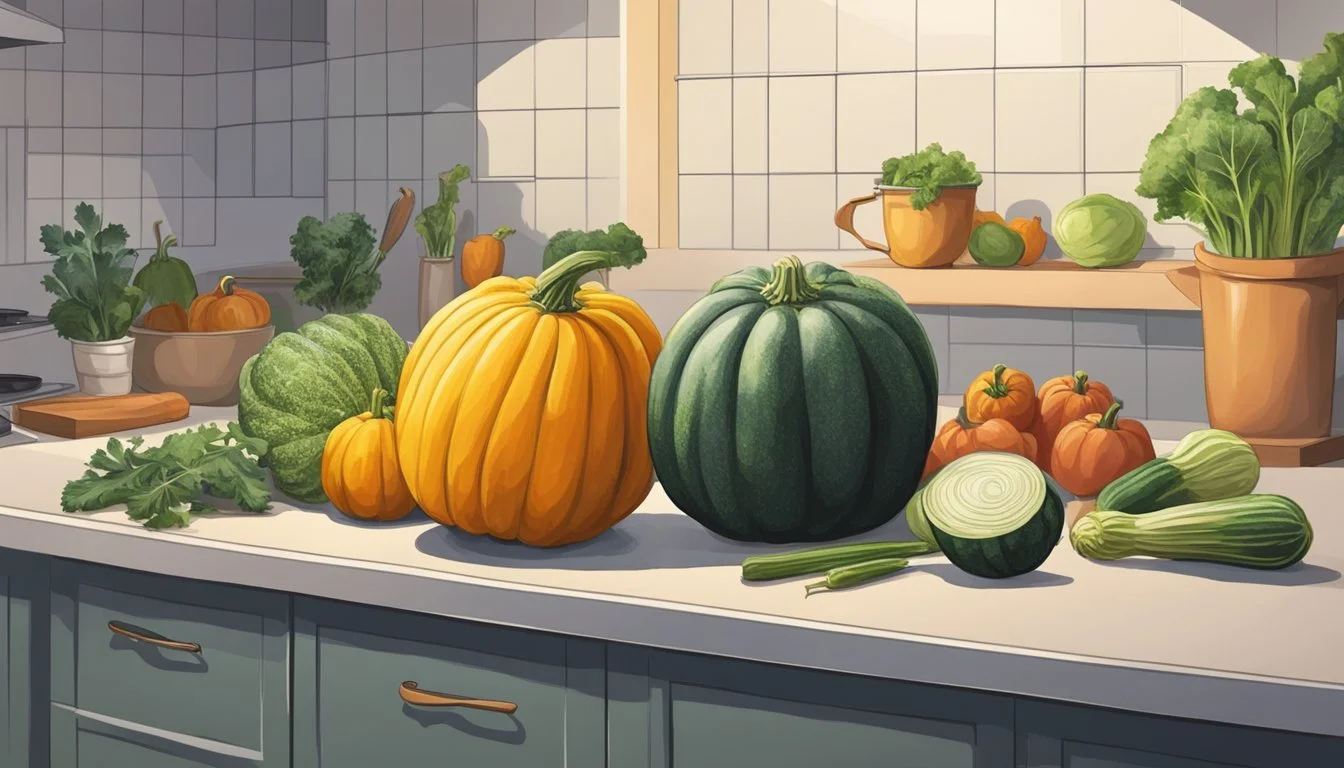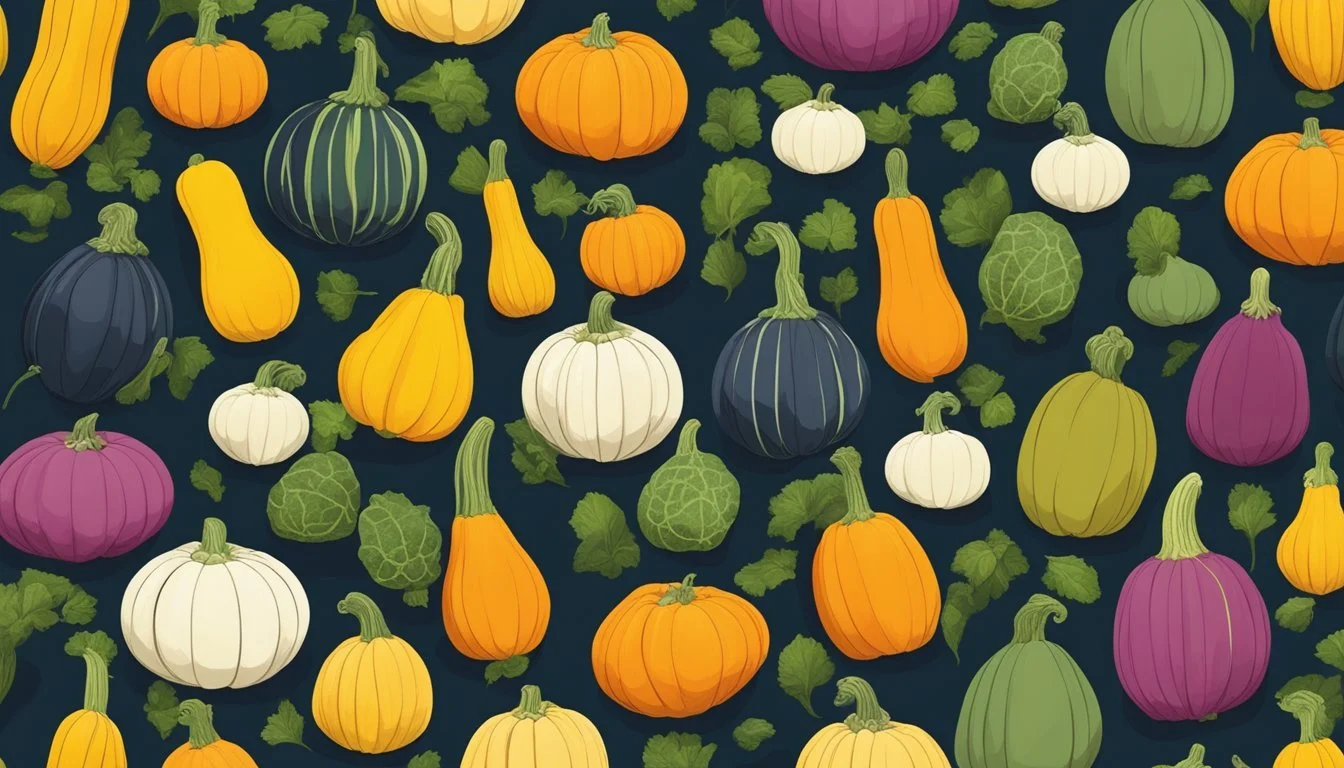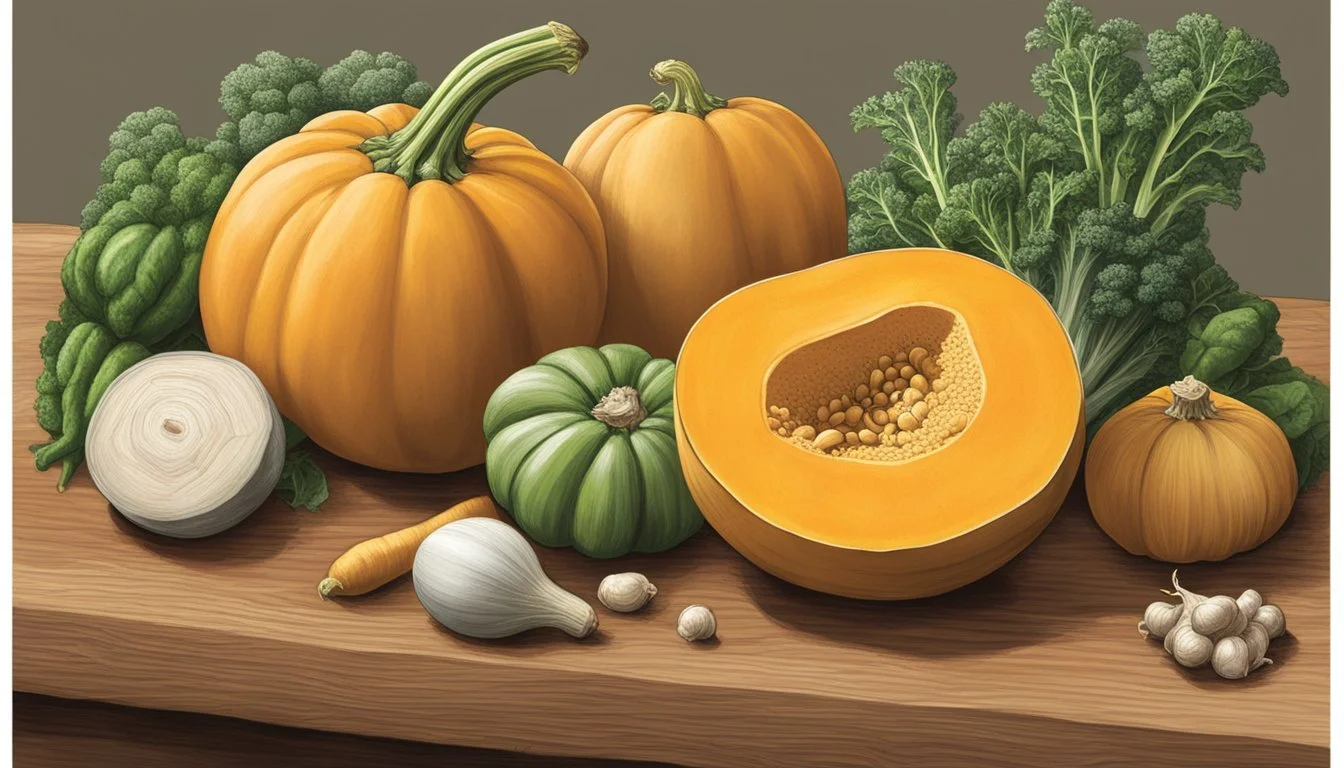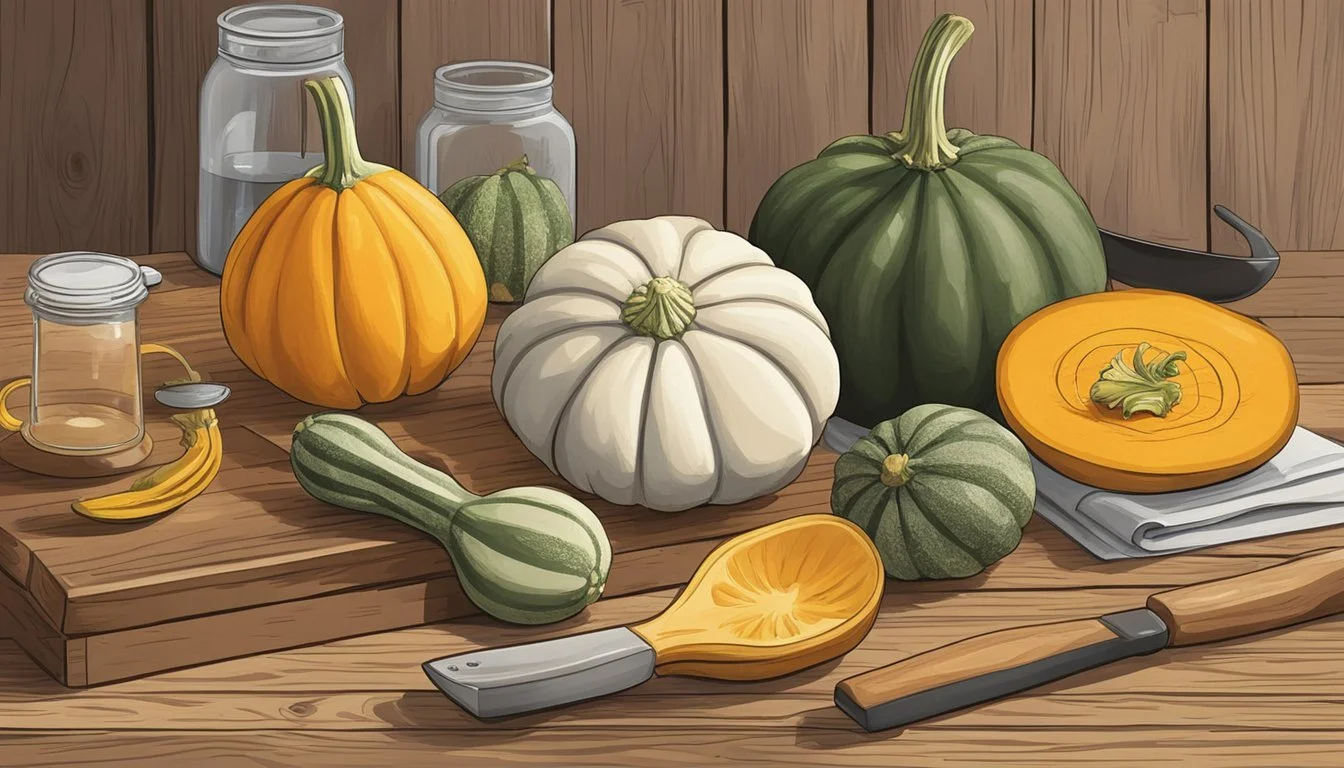How Long Does Squash Last?
Shelf Life and Storage Tips
Squash, a versatile and nutritious vegetable, comes in a multitude of varieties with differing shelf lives. Winter squash, such as acorn, butternut, and spaghetti squash, is known for its hardy nature and can last from one to three months when kept in a cool, dry place. Its longevity makes it a staple for seasonal eating and storage. On the other hand, summer squash varieties like zucchini and yellow squash are best when eaten fresh, they typically last up to a week in the refrigerator when stored properly.
Understanding the storage and shelf life of squash requires a look at each type. Winter squash, with its thicker skin, can be kept at room temperature for months, making them a lasting food item through the colder seasons. Conversely, summer squash has a more delicate composition and a shorter shelf life, necessitating refrigeration to slow down decay. Whether it's stored whole, cut, or cooked, squash will have a varying lifespan based on storage methods.
The preparation of squash can also influence its storage potential. Cooked squash should be consumed within five to seven days, and if cut, it requires refrigeration in an airtight container to extend its freshness up to a week. Moreover, for extended preservation, both cooked and raw squash can be frozen, substantially prolonging its shelf life and ensuring that this nutritious vegetable can be enjoyed year-round.
Understanding Squash Varieties
Squash is categorized into two main types: summer squash and winter squash. Each type has distinct characteristics, and within those categories are a variety of species, each with unique traits regarding storage life, culinary uses, and nutritional benefits.
Characteristics of Summer Squash
Summer squash is harvested when immature, which results in a tender rind and flesh. They are best consumed shortly after harvesting due to their perishable nature. Key varieties of summer squash include:
Zucchini: Known for its green, smooth skin and is best stored in the refrigerator for up to a week.
Yellow Squash: Also referred to as straightneck squash, has a buttery flavor and can last up to seven days when refrigerated.
Pattypan Squash: Notable for its small, scallop shape, it should be used within a week of purchase.
Due to their high water content, summer squashes are not suited for long-term storage and should ideally be consumed within a week to ensure optimal freshness and taste.
Characteristics of Winter Squash
Winter squash has hard, thick skins and dense flesh enabling them to be stored for more extended periods. Their longevity varies by variety:
Butternut Squash: (how long does butternut squash last?) With a sweet, nutty taste, it can last up to four months in a cool, dry place.
Acorn Squash: Recognized by its ridged skin and can be stored for one to three months.
Spaghetti Squash: Stands out with its stringy flesh and can be kept for one to two months.
Delicata Squash: Small and tube-shaped, it lasts around three months.
Kabocha Squash: Has a sweet flavor resembling pumpkins and can be stored for four to eight months, depending on conditions.
Pumpkin: The quintessential winter squash, known for its role in fall festivities, can be stored up to two months.
Winter squashes, due to lower water content and firmer structure, are well-suited for storage over months when kept in appropriate conditions, often in a cool and dry environment away from direct sunlight.
Optimal Storage Conditions
Storing squash to maintain freshness relies on creating an environment with specific temperature and humidity levels, coupled with careful management of light exposure and air circulation.
Ideal Temperature and Humidity
For squash storage, one should maintain a temperature range of 50-55°F (10-13°C) with a relative humidity of 50-70% to prolong its shelf life. Squash should not be refrigerated or frozen, as temperatures lower than 50°F (10°C) can cause chilling injuries resulting in flavor loss and decay. Instead, they should be stored in a cool, dark place like a pantry, which usually provides the ideal conditions.
Storage Place Temperature Range Relative Humidity Pantry 50-55°F (10-13°C) 50-70%
Light Exposure and Air Circulation
Squash should be kept away from direct sunlight, which can accelerate spoilage. They should not be lumped together in a confined space; instead, it's best to store them in a single layer with ample air circulation. A well-ventilated area not only prevents rot but also helps maintain consistent temperature and humidity levels, contributing to longer-lasting squash. Room temperature storage is not ideal as it typically exceeds the recommended 55°F (13°C) mark for squash preservation.
Maximizing Shelf Life
Proper techniques in pre- and post-harvest care alongside effective storage methods are crucial to maximize the shelf life of squash. By adhering to specific procedures, one can significantly extend the freshness and edibility of this versatile vegetable.
Pre-Harvest Considerations
For optimal shelf life, squash should be harvested when it is mature and has reached the right size. The skin should be firm and glossy, indicating peak freshness. A mature squash has a harder skin that is more resistant to bruises and decay, contributing to a longer storage life.
Post-Harvest Handling
Once harvested, careful handling of squash is paramount to prevent damage and spoilage. Squash should be cured, if necessary, to improve shelf life. Damage-free and cured squash can be stored in a cool, dry place. Fresh vegetables are more susceptible to degradation if bruised or damaged during harvest.
Food Storage Methods
Effective food storage can drastically affect the shelf life of squash. For summer squash:
Refrigerate within two hours of picking.
Place in a perforated plastic bag to allow airflow.
Store in the crisper drawer of the refrigerator.
Summer squash can last up to seven days under these conditions.
For winter squash:
Store in a cool, dry place (50-60°F / 10-15°C).
Avoid direct sunlight and moisture.
Winter squash can last for one to three months when stored properly.
In both cases, using an airtight container can extend shelf life after cutting. Freezing squash is another preservation method, best done by steaming the flesh, then placing it in freezer-safe containers, where it can last for several months.
Preparation and Preservation Techniques
Proper preparation and preservation are vital for extending the lifespan of squash. These processes ensure the squash remains usable for cooking and consumption for as long as possible.
Cleaning and Preparing Squash
Before storing or cooking squash, it should be properly cleaned. This involves wiping the exterior with a damp cloth to remove any dirt. For preparation, cutting the squash into the required size is necessary, usually into ¼ inch strips for dehydrating. Peeling may be needed for certain recipes, and seeds are often removed before cooking methods such as roasting or grilling are applied.
Freezing Process
Freezing squash requires a few steps to maintain the firm flesh and nutritional value. Initially, squash should be blanched in boiling water, then quickly transferred to an ice water bath to halt the cooking process. After draining, squash can be portioned, placed on a baking sheet to freeze individually, and then transferred to freezer-safe bags or containers. This ensures squash remains frozen without forming into a single clump, which can negatively affect texture and flavor.
Cooking and Storing Leftovers
Once cooked, squash, whether roasted, grilled, or steamed, should be stored in airtight containers in the refrigerator for up to seven days. For longer storage, cooked squash can be pureed and frozen. Leftover pureed or whole cooked squash can add variety to different recipes, like soups and baked goods. Cooked squash should be reheated safely, either by using an oven or a microwave, until it reaches the correct temperature throughout.
Recognizing Spoilage
Identifying whether a squash has gone bad is crucial to ensure one's safety and enjoyment of this versatile vegetable. The consumer should inspect for visible decay and assess any off-putting smells before preparation.
Visual and Textural Signs
One must examine the squash for any blemishes or soft spots that indicate spoilage. Mold usually presents as fuzzy or cotton-like spots that can be white, green, blue, or black, and these are signs that the squash is no longer suitable for consumption. The flesh of a good squash should be firm; a rotten or decaying squash often has a wrinkled or pitted skin and a leathery texture.
Signs of spoilage:
Blemishes or dark spots
Soft areas indicating rot
Signs of mold or mildew growth
Wrinkled, pitted, or harsh skin texture
Olfactory Indicators
The smell of a squash can reveal its condition. Fresh squash should have a mild, sometimes slightly sweet scent. An unpleasant or strong odor is a reliable indicator of spoilage. The flavor and nutrients decline when the squash is spoiling, potentially affecting the taste of dishes such as salad, pasta, or when the squash is sliced for other preparations. A spoiled squash can emit a sour or decay-like smell, and it should not be consumed.
Indicators of spoilage by smell:
Unpleasant, sour, or strong odors
Absence of a mild or subtly sweet scent indicating freshness
Squash Uses in Cuisine
Squash is a versatile vegetable incorporated into a variety of dishes, ranging from warm soups to refreshing salads. It is a staple ingredient that can transform the taste and texture of meals.
Incorporating Squash into Meals
Soups: Squash lends itself well to soup creations. Butternut squash, in particular, is often pureed to make a creamy, comforting soup, especially popular in the fall. Adding pumpkin to soups provides a hearty flavor and a boost of nutrition.
Recipes: Across different cuisines, squash appears in numerous recipes. Stuffed squash is a festive dish where various types of squash, such as acorn or zucchini, are filled with a flavorful mixture of ingredients. Squash can also be cubed and incorporated into stews and curries.
Puree: Squash puree is a foundation for dishes such as ravioli filling or as an alternative pizza topping. It offers a smooth texture and mixes easily with spices and other flavors, creating rich, depthful dishes.
Pasta: Sliced or spiraled squash serves as a substitute for traditional pasta, providing a lighter, nutrient-rich base for sauces. Spaghetti squash, when cooked, separates into strands resembling spaghetti and is a popular low-carb pasta alternative.
Salad: Raw squash can be shaved thinly to add a crisp, fresh element to salads. It pairs well with various dressings and can be a canvas for bold flavors.
Roasted: Roasting enhances the natural sweetness of squash and creates a caramelized exterior. Pieces of roasted squash can serve as a side dish or be incorporated into warm salads and grains.
Grilled: Slices of squash can be marinated and grilled, bringing out a smoky flavor. Grilled squash works well as a side for barbecues or diced in salads.
Pumpkin: As a type of squash, pumpkin is commonly used in both sweet and savory dishes. Pumpkin pieces can be roasted or turned into a puree for pies, bread, and other baked goods.
Health and Safety Considerations
When considering the consumption of squash, one must not only take into account its shelf life, but also how its nutritional benefits can be maximized while preventing foodborne illness.
Nutritional Benefits
Squash is a nutritious addition to any diet, providing a variety of nutrients. Fresh squash contains vitamins such as vitamin A, vitamin C, and vitamin E, as well as minerals like magnesium, potassium, and manganese. When squash is consumed cooked or raw, these nutrients contribute to overall health, supporting eye health, immune function, and skin health.
Preventing Foodborne Illness
Maintaining food safety is crucial when handling fresh produce, including squash. Fresh squash should be stored properly to prevent spoilage and microbial contamination. It's imperative that one washes squash thoroughly before cutting into cubes or preparing it raw to minimize the risk of foodborne illness. After squash is cooked, it should be stored in the refrigerator if not consumed immediately, and leftovers should be eaten within a safe time frame to reduce the risk of food-related infections.








